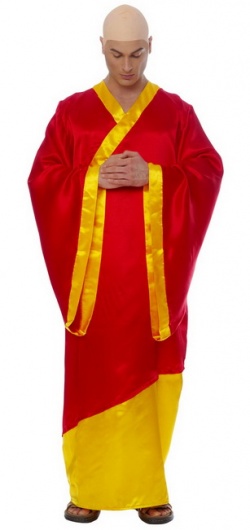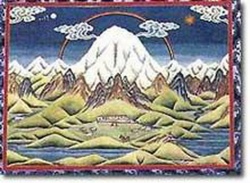Difference between revisions of "Mahayana: Vasubandhu's Abhidharma-kosa"
| Line 23: | Line 23: | ||
Collet Cox relates the problems that arise when trying to abandon the proclivities, which relate to different sources of bondage such as [[defilements]] thus: | Collet Cox relates the problems that arise when trying to abandon the proclivities, which relate to different sources of bondage such as [[defilements]] thus: | ||
| − | Within post-[[Vibhasa]] [[Sarvastivadin]] [[Abhidharma]] texts, categories of [[defilements]] come to be differentiated according to their functions, which in turn become the [[subject]] of heated {{Wiki|sectarian}} controversy. | + | Within post-[[Vibhasa]] [[Sarvastivadin]] [[Abhidharma]] texts, categories of [[defilements]] come to be differentiated according to their functions, which in turn become the [[subject]] of [[heated]] {{Wiki|sectarian}} [[controversy]]. |
| − | This controversy reflects the further refinement of theories concerning the operation of [[thought]] and proclivities as well as the methods by which proclivities are to be abandoned. It is also interconnected with the [[development]] of more sophisticated [[Wikipedia:Ontology|ontological]] theories, which affected all aspects of [[Abhidharma]] [[doctrine]]. | + | This [[controversy]] reflects the further refinement of theories concerning the operation of [[thought]] and proclivities as well as the [[methods]] by which proclivities are to be abandoned. It is also interconnected with the [[development]] of more sophisticated [[Wikipedia:Ontology|ontological]] theories, which affected all aspects of [[Abhidharma]] [[doctrine]]. |
| − | In particular, this controversy involves the possibility of a {{Wiki|distinction}} between latent and active proclivities and the [[relation]] between them and the [[thought]] {{Wiki|processes}} of the {{Wiki|individual}} life-stream they characterize. | + | In particular, this [[controversy]] involves the possibility of a {{Wiki|distinction}} between latent and active proclivities and the [[relation]] between them and the [[thought]] {{Wiki|processes}} of the {{Wiki|individual}} [[life-stream]] they characterize. |
At issue is the [[development]] of a model that could successfully explain the apparent, persistent [[activity]] of certain proclivities, the reemergence of their [[activity]] after an interruption, and the {{Wiki|mechanism}} by which they are to be abandoned. For example, can un-virtuous proclivities arise [[conditioned]] by a [[virtuous]] factor? | At issue is the [[development]] of a model that could successfully explain the apparent, persistent [[activity]] of certain proclivities, the reemergence of their [[activity]] after an interruption, and the {{Wiki|mechanism}} by which they are to be abandoned. For example, can un-virtuous proclivities arise [[conditioned]] by a [[virtuous]] factor? | ||
| − | If not, then what is the causal {{Wiki|mechanism}} by which [[defilements]] arise immediately after a [[virtuous]] moment of [[thought]]? Further, if [[defilements]] are associated with [[thought]], since two associated thought-concomitants of differing [[moral]] quality cannot occur simultaneously, how can the [[virtuous]] counter agent that obstructs a particular proclivity arise simultaneously with it? | + | If not, then what is the causal {{Wiki|mechanism}} by which [[defilements]] arise immediately after a [[virtuous]] [[moment]] of [[thought]]? Further, if [[defilements]] are associated with [[thought]], since two associated thought-concomitants of differing [[moral]] [[quality]] cannot occur simultaneously, how can the [[virtuous]] counter agent that obstructs a particular proclivity arise simultaneously with it? |
If, however, proclivities are not understood to be associated with [[thought]], their very [[activity]] of defiling [[thought]] is meaningless, and no [[abandonment]] is necessary. Finally, if proclivities are understood to [[exist]] as real entities in the {{Wiki|past}} and {{Wiki|future}} as well as in the {{Wiki|present}}, then they can never be destroyed in the [[sense]] that they become [[Wikipedia:Nothing|nonexistent]], so in what [[sense]] can they be said to be abandoned? | If, however, proclivities are not understood to be associated with [[thought]], their very [[activity]] of defiling [[thought]] is meaningless, and no [[abandonment]] is necessary. Finally, if proclivities are understood to [[exist]] as real entities in the {{Wiki|past}} and {{Wiki|future}} as well as in the {{Wiki|present}}, then they can never be destroyed in the [[sense]] that they become [[Wikipedia:Nothing|nonexistent]], so in what [[sense]] can they be said to be abandoned? | ||
Latest revision as of 21:50, 7 August 2021
The Abhidharma-kosa ("Treasury of the Higher Teachings") of Vasubandhu helps orient readers to a Buddhist view of the path to liberation.
The Abhidharma-kosa is organized into nine chapters. The first two set forth the factors organized under categories like aggregates, sense bases, and elements.
These factors are distinguished as pure and impure, conditioned and unconditioned, and so on. The work lists about 75 factors that have come to be thought of as the definitive Abhidharma ("Higher Teaching") account relating to Dharma.
The intention of the entire work is fixed on the proclivities. The basic six ones are considered to be:
attachment (raga)
aversion or repugnance (dvesa, pratigha)
pride (mana)
ignorance (avidya)
wrong view (drsti)
perplexity (vicikitsa).
By relating these proclivities to varied defilements, contaminants taints, floods, bonds, afflictions and envelopers, Vasubandhu develops a highly complex analysis in Chapter 5.
Tibetan interpretations of the concentrations (jhanas)
Vasubandhu's Critique of the Soul (metaphysics)
Collet Cox relates the problems that arise when trying to abandon the proclivities, which relate to different sources of bondage such as defilements thus:
Within post-Vibhasa Sarvastivadin Abhidharma texts, categories of defilements come to be differentiated according to their functions, which in turn become the subject of heated sectarian controversy.
This controversy reflects the further refinement of theories concerning the operation of thought and proclivities as well as the methods by which proclivities are to be abandoned. It is also interconnected with the development of more sophisticated ontological theories, which affected all aspects of Abhidharma doctrine.
In particular, this controversy involves the possibility of a distinction between latent and active proclivities and the relation between them and the thought processes of the individual life-stream they characterize.
At issue is the development of a model that could successfully explain the apparent, persistent activity of certain proclivities, the reemergence of their activity after an interruption, and the mechanism by which they are to be abandoned. For example, can un-virtuous proclivities arise conditioned by a virtuous factor?
If not, then what is the causal mechanism by which defilements arise immediately after a virtuous moment of thought? Further, if defilements are associated with thought, since two associated thought-concomitants of differing moral quality cannot occur simultaneously, how can the virtuous counter agent that obstructs a particular proclivity arise simultaneously with it?
If, however, proclivities are not understood to be associated with thought, their very activity of defiling thought is meaningless, and no abandonment is necessary. Finally, if proclivities are understood to exist as real entities in the past and future as well as in the present, then they can never be destroyed in the sense that they become nonexistent, so in what sense can they be said to be abandoned?

